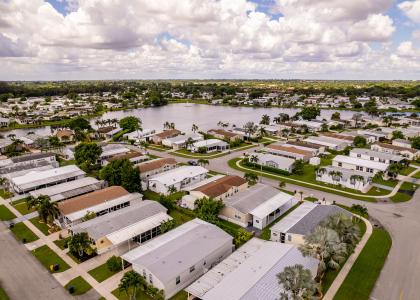Saving energy saves money everywhere — in cities, suburbs, small towns, and remote, sparsely populated areas. But for those living in the 75% of the United States considered to be rural, energy efficiency programs can be hard to come by. That is why ACEEE is launching a new rural research initiative, aimed at understanding the unique energy efficiency needs of those living in sparsely populated areas and finding solutions to the challenges they face. With rising energy costs and proposed cuts to rural development funding it is a critical time for these often underserved residents of rural America.
What does it mean to be in a rural or small-town area?
Rural America is not just large fields of crops and combine harvesters. It includes small towns with older homes, energy-intensive manufacturing facilities, and small family farms.
Just as rural and small-town America’s lifestyle is unique to its geography, so too are its energy, economic, and societal challenges, cueing the need for tailored energy efficiency programs. Delivering energy efficiency programs is particularly challenging for any utility serving rural customers because low-population density may mean higher program cost per capita. Access to the technical and financial resources needed to design and implement tailored energy efficiency programs can be an obstacle for utilities serving rural areas, whether they are electric cooperatives (co-ops), municipal utilities (munis), or investor-owned utilities (IOUs). All the while, the average rural population is aging, as the younger population relocates to find jobs in metro areas, leaving a dearth of energy audit and retrofit workers.
However, there is a reason for hope. At last year’s SEEA & AESP TRANSFORM Rural Pre-Conference Session, an overflowing room of rural electric cooperatives (co-ops) and local energy stakeholders provided evidence that energy efficiency helped their customers and businesses, reminding those in Washington DC — and across the nation — that rural America presents unique opportunities that make it a worthwhile investment.
Unique rural opportunities
Rural electric co-ops are particularly poised to design and implement energy efficiency programs. Many co-ops buy their electricity supply from larger utilities (that own generation) and resell it to their members (customers). Therefore, it is in the co-op’s economic interest to help its members save energy, so it can spend less on power from the utility that charges high peak-time rates. Co-ops also offer the advantage of functioning like a living lab for pilot programs because their smaller service territory and member base can make rolling out and adjusting a new program easier than it is for a large IOU. IOUs and municipal utilities can also help deliver energy efficiency to their rural customers, opening the opportunity to tap into the multiple value streams of energy efficiency.
Our rural research initiative
The energy issues that persist in rural America represent untapped potential for large energy and cost savings that can tangibly improve the quality of life of rural families and help businesses manage their energy costs. ACEEE’s 2018 rural research initiative is designed to make those savings a reality. Through research reports, blog posts, and a webinar series, we will answer the following questions with the help of co-ops, municipal utilities, IOUs, and other key experts:
- What is the average household energy burden for rural households and what households face the highest energy burden?
- What energy efficiency programs are currently being delivered in rural areas?
- What are the key barriers to delivery of energy efficiency in rural areas? How have individual programs sought to overcome those barriers? What innovative strategies should be deployed elsewhere?
- How can utilities with large service territories effectively tailor energy efficiency offerings to rural communities?
- How are utility-sector energy efficiency programs leveraging non-ratepayer funding sources to reach more rural residents? What are key considerations for leveraging federal funding, financing, and other funding sources effectively?
- To what extent are utilities and efficiency program implementers assessing broader economic development impacts of energy efficiency programs in rural areas and small towns?
Our efforts will include the 2018 Rural Energy Conference in Atlanta on October 22. At the conference, cooperatives, utilities, policymakers, efficiency providers, investors, and financiers will share best practices for implementing and financing energy efficiency programs that alleviate energy burdens for low-income rural residents, and help spur economic development in small-town communities.
If you are interested in offering input on project priorities, key partnerships, and funding opportunities, please reach out to Jill Ferguson.



